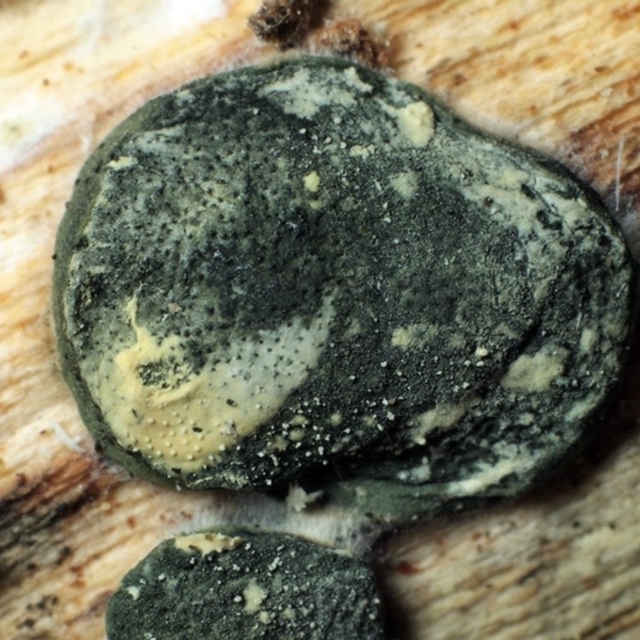Trichoderma pseudokoningii group
The sexual spores (colourless in potassium hydroxide) are produced in tiny ellipsoidal chambers (or perithecia), up to 0.25 mm in greatest dimension. A large number appear together, embedded within one mass of tissue, the whole called a stroma and visible to the naked eye. Stromata are blackish, circular to irregular in outline, mostly 2-4 millimetres in diameter (but up to 10) and 1-2 millimetres high. The perithecial openings protrude as tiny pimples. Separate stromata may appear close together on a woody substrate. Asexual spores are produced by a greenish mould.
There are several colourless-spored, blackish-stroma Trichoderma species in which identification to species is not possible based just on the features of the sexual state, discussed in: Samuels et al. (1998). The Hypocrea schweinitzii complex and Trichoderma sect. Longibrachiatum, Studies in Mycology, 41, 1-54.) I refer to this as the ‘Trichoderma pseudokoningii group’ since Trichoderma pseudokoningii is the one species of this group reported from Australia in that paper.
Gates & Ratkowsky (A Field Guide to Tasmanian Fungi, 2nd ed., 2016, page 237) report the greenish black Trichoderma lixii. It has green spores.
Previously Hypocrea was the generic name for the sexual state, see: Bissett et al. (2015). Accepted Trichoderma names in the year 2015, IMA Fungus, 6, 263-295.
Trichoderma pseudokoningii group is listed in the following regions:
Canberra & Southern Tablelands
Species information
- Trichoderma pseudokoningii group Scientific name
- Common name
- Not Sensitive
- Local native
- Non-invasive or negligible
- Machine learning
Location information
-
Maps
Mount Painter





